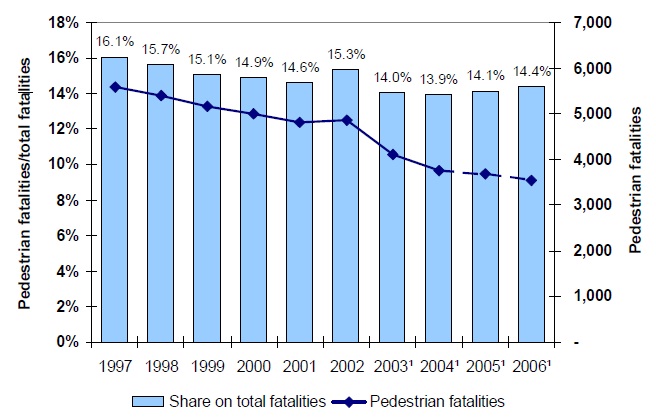
The objective of this research is to create an overall picture of pedestrians’ road safety in European countries, to identify factors associated with increased pedestrian fatality risk, and to propose countermeasures for the improvement of pedestrians road safety in Europe. In particular, data on pedestrians’ fatalities for the period 1997-2006 from 19 EU countries, extracted from the EU CARE database, are associated with basic road safety factors like pedestrian’s age and gender (with particular focus on children and the elderly), lighting conditions, area type (inside / outside urban area) as well as seasonality. Both overall trends and countries comparisons are examined, whereas pedestrians’ accident risk rates (fatalities per population) are also estimated. The results suggest that, although pedestrian fatalities in Europe present a decreasing trend, pedestrian fatality rates are still increased in Southern European countries, as well as in the new Member States. Moreover, pedestrian fatalities are increased inside urban areas, at night-time and during the winter, whereas children and the elderly remain the most vulnerable groups. These results are further discussed in relation to pedestrians risk exposure. Finally, a review of various road safety measures from the international experience is carried out and specific areas of action are proposed in the light of these results.
| ID | pc101 |
| Presentation | |
| Full Text | |
| Tags | accident analysis, international comparisons, pedestrians |







